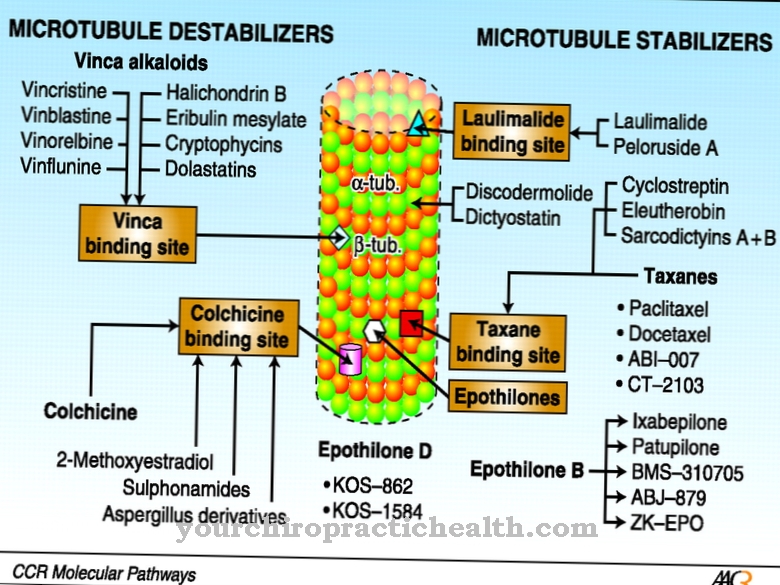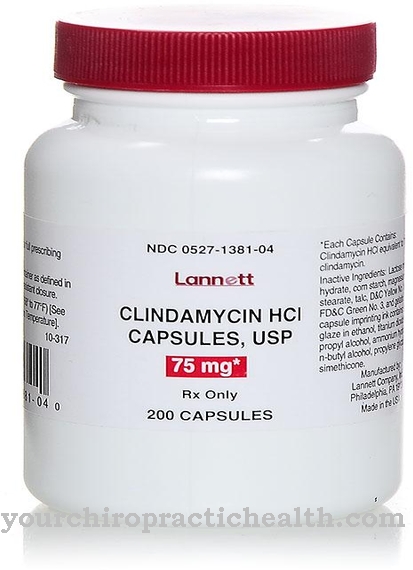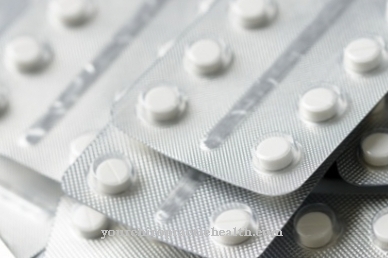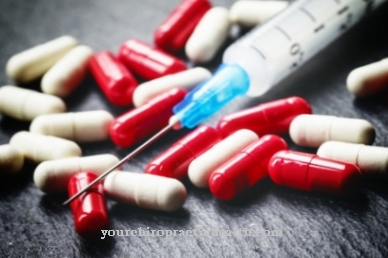Prednisolone is a drug that belongs to the artificially produced glucocorticoids. It has the same effect in the body as the body's own hydrocortisone produced in the adrenal cortex.
What is Prednisolone?

At Prednisolone it is an active ingredient from the group of cortisone preparations. Cortisone is a hormone produced by the body. It is made in the adrenal glands and has different effects in the body.
Prednisolone is used therapeutically to inhibit inflammation and to reduce swelling. It prevents the penetration of inflammatory cells into damaged tissue and the release of immunomodulating substances.
Prednisolone has anti-inflammatory, immunosuppressive and anti-allergic effects and influences lipid metabolism and carbohydrate metabolism.
Pharmacological effect
In addition to its influence on the carbohydrate and fat metabolism Prednisolone also on the hematopoietic and lymphatic systems. It also has an impact on the mineral corticosteroid and calcium balance. There are also influences on inflammation, inflammatory secretions (exudation) and the growth of certain tissues.
With regard to the carbohydrate metabolism, the active ingredient promotes gluconeogenesis, the build-up of glucose from protein and intermediate products. During fat metabolism, prednisolone leads to the redistribution of fat deposits with increased fat loss. The amount of fat is reduced on the extremities, but deposited in the liver and on the trunk of the body.
Ingesting the active ingredient increases the number of white blood cells in the lymphatic tissue. However, the subsets of eosinophil granulocytes and lymphocytes decrease in number. The resulting restricted defense results in a greater susceptibility to infections. In the blood-forming system, the administration of prednisolone increases the formation of red blood cells and platelets. At the same time, the amount of substances that promote coagulation is reduced, so there is an increased risk of blood clots in the vessels.
The inhibition of inflammation, exudation and cell proliferation initiated by this active ingredient results in an anti-inflammatory effect, which is associated with delayed wound healing and increased ulcer formation (ulcer = deep-lying defects in the skin or mucous membrane). In addition, prednisolone lowers the calcium level in the blood, as the calcium absorption normally occurring in the intestine is inhibited and at the same time the excretion via the kidneys is increased.
In addition, a mineral corticoid active component can be observed, the consequence of which is a decrease in sodium excretion with a simultaneous increase in potassium excretion.
Medical application & use
Prednisolone is used both in the form of substitution therapy as physiologically dosed hormone replacement treatment and in the form of unphysiologically high dose pharmacotherapy.
The latter is used for rheumatological diseases such as rheumatoid arthritis or vasculitis, for diseases of the lungs such as bronchial asthma, acute worsening of COPD or hay fever. Other areas of application are changes in the skin (allergic reactions), cancer therapy for certain forms of leukemia, diseases of the blood-forming system or neurological symptoms such as multiple sclerosis. Prednisolone can also be used for eye diseases such as optic neuropathy, gastrointestinal diseases, kidney diseases and infections.
If this active ingredient is prescribed, regular medical checks must be carried out. Particular attention is paid to the potassium intake (increased) and the sodium restriction (cautious). An accompanying osteoporosis prophylaxis, which consists of calcium and vitamin D administration and plenty of exercise, is also one of the medical tasks when prescribing prednisolone.
As a rule, the dose has to be increased in acute stressful situations such as operations, accidents or births, as the need increases due to the stress. If people in the vicinity of the patient get chickenpox or measles, prophylactic treatment should be given, as there is an increased risk of infection due to the immune deficiency caused by the drug.
Risks & side effects
The taking of Prednisolone Due to its effect on the hormonal balance, it can lead to the development of Cushing's syndrome with the typical full moon face and stem obesity. Under certain circumstances, disturbances in the potassium and sodium balance, an increase in blood lipids, weight gain, a disturbance in the sex hormone balance and the development of diabetes mellitus can be recorded.
So-called stretch marks can form on the skin. Atrophy (parchment skin), petechiae (bleeding from the skin), telangiectasia, pigmentation disorders and steroid acne are also among the side effects of prednisolone.
With regard to the muscles and the skeleton, muscle weakness, muscle breakdown and osteoporosis are among the marginal symptoms of treatment with this active ingredient. Furthermore, depression, sleep disorders or psychoses are possible under the influence of prednisolone. Ulcers, bleeding and inflammation of the pancreas can develop in the gastrointestinal tract. For example, cataracts or glaucoma occur in the eyes as a prednisolone side effect.
























.jpg)



